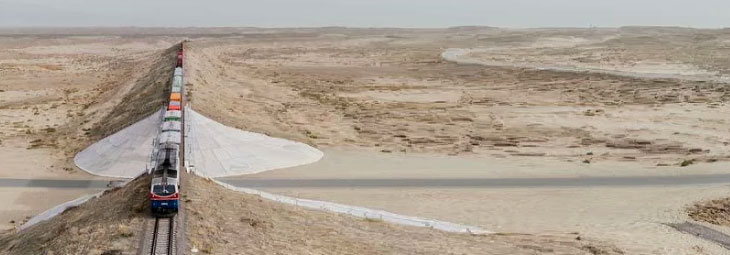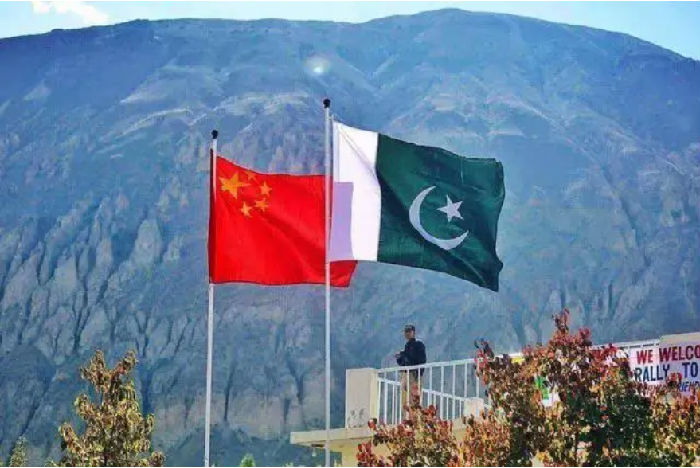



Source:<https://www.163.com/dy/article/H4U0C0C30534NABM.html>
In recent years, China-Pakistan Economic Corridor (CPEC), as one of the six corridors initiated by the Belt and Road Initiative, has not only promoted the economic and social development in Pakistan but also further strengthened the all-weather strategic cooperative partnership between China and Pakistan through comprehensive and multidisciplinary cooperation between the two countries. The CPEC has become the model and flagship project of the Belt and Road Initiative, providing essential opportunities for Pakistan's development. The open and transparent practical cooperation between China and Pakistan to jointly build a "community of shared future" has promoted the economic and social development of the two countries and benefited neighbouring countries, and contributed to regional stability and development.
The development of CPEC has promoted the economic and social development in Pakistan
Since the launch of CPEC, the construction of relevant projects has progressed smoothly. During the first phase of construction, Pakistan's energy shortage has been greatly alleviated, and the transport infrastructure has been further improved. The projects of CPEC have created a large number of employments for the Pakistani people. All these achievements have laid a solid foundation for the second phase of the CPEC. According to incomplete statistics from the Planning Commission of Pakistan, the early projects in the first phase of CPEC have created about 38,000 jobs, of which more than 75% are local. Energy projects have created the most jobs, employing 16,000 Pakistani workers and engineers. About 13,000 jobs have been created in the transport infrastructure development, of which 9,800 Pakistani workers have been employed in the Peshawar-Karachi Expressway (Sukkur to Multan section), the largest infrastructure project under the corridor, and 2,071 local jobs have been created in the second phase of the Karakoram Highway upgrade. In addition to direct employment, the corridor projects have created thousands of indirect jobs, bringing prosperity to local industries such as construction and services.
In the second phase of the CPEC, China-Pakistan cooperation should focus on agriculture, manufacturing and industrial parks to improve people's livelihood and promote the all-around economic development of Pakistan through the economic and social benefits brought by industrial cooperation. According to the Long Term Plan for China-Pakistan Economic Corridor, the main directions of China-Pakistan industrial cooperation range from textiles and engineering equipment to modern agriculture and logistics. Cooperation between China and Pakistan in relevant areas will drive economic growth and increase people's income in Pakistan, and the economic and social benefits will promote poverty reduction in Pakistan and enable more Pakistani people to get out of poverty as soon as possible and onto the road of development and prosperity.
Pakistan is a developing country with agriculture as its primary industry. In addition to agriculture, there are certain advantages in the leather, manufacturing, textile industry and service in Pakistan. However, due to technology, capital etc., the development of Pakistan's industry is relatively slow. With the launch of CPEC, especially the Gwadar Free Zone and the Special Economic Zones under the CPEC, more and more Chinese enterprises are coming to Pakistan to conduct industrial cooperation in relevant fields. Pakistan is located in the west of South Asia, adjacent to the Middle East and Africa, with superior geographical conditions, low labour costs and raw material advantages. Through complementary advantages, industrial cooperation between China and Pakistan will greatly promote Pakistan's economic development and poverty reduction and bring remarkable economic and social benefits.
The mutually beneficial projects have not added to Pakistan's debt burden
Since the end of World War II, it has been a common practice for countries to implement significant projects through international financing. The International Monetary Fund and the Asian Development Bank have provided Pakistan with loan support. At present, 47 per cent of Pakistan's foreign debt comes from multilateral financial institutions. Of the 22 projects under the CPEC, 18 are directly funded or assisted by China, while only four use Concessional loans from China. Therefore, it is safe to say that the corridor projects have not increased Pakistan's debt burden. On the contrary, the completion and operation of these projects will release due economic benefits and bring considerable economic returns to Pakistan. The corridor projects have always been transparent, and all projects have been scientifically proven and followed due procedures.
While the CPEC has helped Pakistan achieve rapid development, there has been a cacophony of voices calling the multi-billion dollar project a "debt trap" and saying it will place a heavy burden on its economy. Noor Ahmed, permanent secretary of Pakistan's Ministry of Economic Affairs, dismissed misleading talk of a "debt trap". He said that of Pakistan's total foreign debt of about $106 billion, Chinese loans account for only 10% to 11%. The remaining 89% to 90% mainly comes from the International Monetary Fund, the Paris Club and other Western institutions. Some of the Chinese funding for Pakistani infrastructure projects is a pure investment, some interest-free loans and some on straightforward terms. China lends money to Pakistan at the lowest interest rate in the world. Therefore, there is no "debt trap". Government loans linked to the CPEC have an interest rate of just 2 per cent and a repayment period of 20 to 25 years, with debt repayments already starting in 2021. The corridor project did not directly burden loan repayment and capital outflows from the energy sector.
It should be noted that Gwadar port is a grant-based investment, which means the Pakistani government will not have to reimburse the amount invested in developing the port. Before the CPEC project was built, Pakistan faced its worst energy crisis in history. The early harvest phase of the project allows Pakistan to avoid an energy crisis by generating electricity from its resources, including coal and solar. Not only locals but also foreign rating agencies and economic organizations see CPEC as a massive boon for Pakistan and not a "debt trap". China's loans and investment in Pakistan will promote Pakistan's development and benefit China, so it is a win-win situation.
The extension of the corridor will promote regional development and social stability
The CPEC has significantly improved Pakistan's business environment and made it more attractive to foreign investment, which has aroused intense interest from neighbouring countries, the Middle East and even European countries. Central Asian countries such as Afghanistan, Tajikistan and Kazakhstan have also expressed interest in joining the CPEC. In recent years, China and Afghanistan's economic, trade and investment relations have gradually warmed up. Saudi Arabia, the United Arab Emirates and other countries have also expressed their intention to invest in Pakistan and the CPEC.
In September 2018, the UK Parliament set up the Cross-party Subgroup on the Belt and Road and CPEC to promote understanding of the Belt and Road Initiative and CPEC projects and provide a platform for the British business community to engage actively and seek opportunities. In February 2019, Saudi Crown Prince Mohammed bin Salman visited Pakistan with a $20 billion investment package and participation in constructing an oil refinery facility in Gwadar Port. In February 2020, the Iranian Ambassador to Pakistan Hosseini reiterated Iran's desire to join CPEC in bilateral or trilateral form when delivering a speech entitled "Pakistan-Iran Cooperation for Peace and Security" at the Institute of Policy Studies in Islamabad.
The CPEC promotes the economic and social development of China and Pakistan and promotes regional connectivity and shared prosperity. Facts prove that the CPEC is gaining recognition and participation from more and more countries. As the corridor expands and serves as a high-quality demonstration project of the Belt and Road Initiative, the CPEC will surely bring more benefits to relevant countries and the people of China, Pakistan and other countries in the region.
Source: <https://www.yidaiyilu.gov.cn/xwzx/hwxw/231297.htm>
Translated by Zhao Shengbo